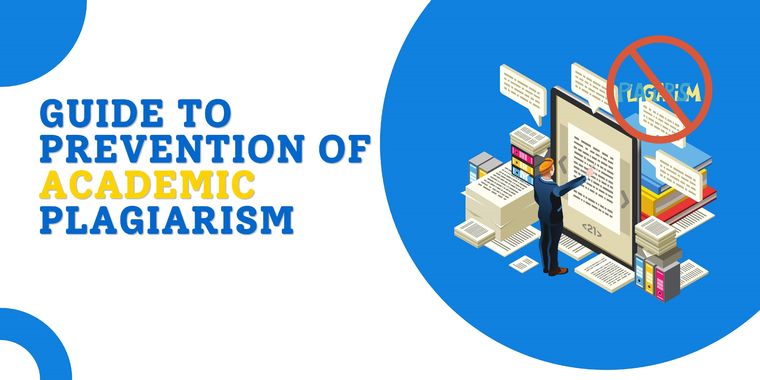In the era of digitalization and artificial intelligence, where content creation is growing rapidly, understanding plagiarism is really important.
Writing is a creative field, and plagiarism is a major problem in the creative, academic, or professional domains just for the lack of writing skills and honesty. Suppose a student is writing an essay, a professional is writing for an online presence, or someone is creating social media content. For all of the practices of content creation, one needs to understand the ethical implications. As a student, if you cannot write a unique essay, you can take services from MyAssignmenthelp to submit plagiarism-free essays. Apart from that, you can also use several tools and resources to maintain uniqueness throughout.
On that note, let us explore the core of plagiarism, and the various types. We will also understand the consequences of plagiarism and its prevention in essay writing.
What Does Plagiarism Mean?
Plagiarism is the act of presenting someone’s ideas, works, or contents as their own. It is an unethical practice as it essentially translates to theft.
Let’s check the specific that fall under plagiarism.
- Copying:
Copying is when you directly take words or sentences without any kind of permission and attribution of the source. Without quotation marks and attribution is a proper academic dishonesty.
- Paraphrasing Without Citation:
Rephrasing and paraphrasing someone else’s words is a kind of plagiarism. You need to include proper citations and acknowledge the ownership of ideas. Even slightly altering the wording also leads to plagiarism.
- Misusing Quotes:
The integrity of your work is compromised by plagiarism, which includes creating material, distorting statistics, and using quotes out of context.
- Presenting Another Author’s Ideas As Your Own:
If you get encouraged by other’s work, that is fine. But claiming other writers’ work as your work is unethical.
Types of Plagiarism:
- Direct Plagiarism: Direct plagiarism is when someone copies something verbatim from a source without giving credit. It is the most obvious type of copying and plagiarism detection software may quickly identify it.
- Accidental Plagiarism: In spite of the best of intentions, people sometimes make mistakes while citing their sources because they don’t know the appropriate format, are sloppy, or don’t comprehend what paraphrasing entails. Even if it was inadvertent, it is still a serious offense.
- Self-Plagiarism: You can indeed copy ideas from within! Plagiarism still exists when substantial sections of your own work are used in a new context without proper reference.
- Mosaic Plagiarism: Mosaic plagiarism, also known as patchwork plagiarism, is the practice of using someone else’s words in combination with original text without giving due credit. It entails keeping the original structure and ideas while moving sentences around or replacing synonyms.
Consequences in Essay Writing:
Understanding the seriousness of plagiarism is crucial for every student and professional. This practice may not put you in jail, but it will destroy your reputation. Few institutions are very strict about plagiarism. They can directly cancel the assignment. On the other hand, the legitimate author of the source may impose copyright laws.
Suppose, you are a student who wants to get their dissertation published. If you get caught for plagiarism, the entire journey and hard work will be destroyed in a minute. So, before you submit any of your work, check it on online tools and websites. Or else you can look for essay writing services where pro editors will proofread your work.
Prevention of Plagiarism in Essay Writing:
Now, we are already aware of various types of plagiarism and its consequences. Always remember that writing an original essay is not just about the creation or avoiding trouble; it is about building trust, establishing credibility, and enhancing a responsible voice. Let’s check how to prevent this:
- Maintaining Your Academic Honesty Safe: Students must uphold their academic integrity. Here are some tips to make sure your assignments and research papers stand out for their uniqueness and proper attribution:
- Learn Citation Techniques: Learn the nuances of the citation style you have selected (APA, MLA, or Chicago) and use them consistently in all of your writing. Understanding these styles guarantees precise and understandable attribution.
- Improve Your Summarising and Paraphrasing Abilities: Learn how to accurately and concisely paraphrase concepts and information into your own words. Effectively summarising important ideas also aids in preventing plagiarism.
- Use Plagiarism Detectors: Plagiarism checkers are useful tools to help you find possible problems before submitting your work, even though they are not perfect. Consider them a safety net rather than a crutch.
Few Tools and Websites for Checking Plagiarism and Grammar:
Understanding how to prevent plagiarism is not enough. The journey of ethical content creation requires additional resources to make the smoother prominent:
- Duplichecker: Duplichecker provides both subscription plans with more sophisticated features and a freemium approach with rudimentary plagiarism checks.
- Grammarly: Grammarly offers grammar and style recommendations along with plagiarism detection. (Premium plans available; free limited version available)
- Turnitin: Turnitin is a widely used tool by academic institutions. It offers comprehensive plagiarism detection and provides original reports.
- Quetext: Quetext emphasizes detecting academic plagiarism via similarity scoring and detailed reports.
You must remember that no tool is impeccable. So, make sure to check for plagiarism manually as well.
In Conclusion,
It is a must say that by practicing ethical writing and understanding plagiarism, a student can definitely be able to write a non-plagiarized essay. Consider that the fundamentals of ethical content creation are originality, transparency, and attribution, which will enable you to make a significant contribution to the digital world.



